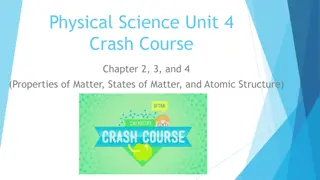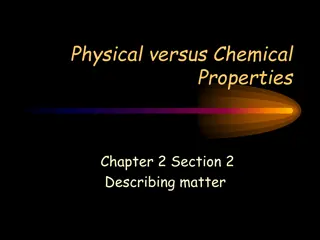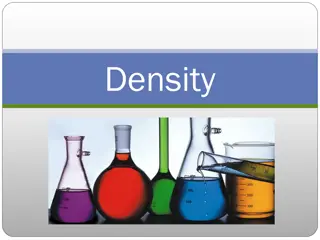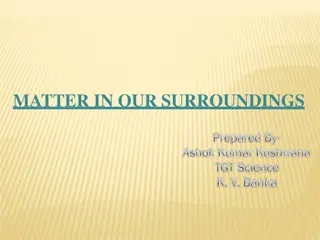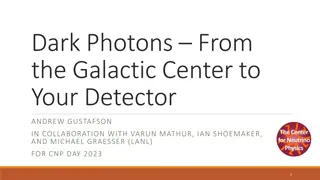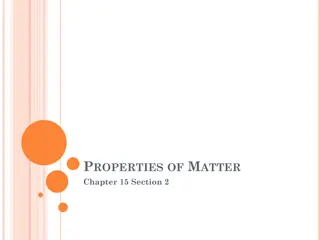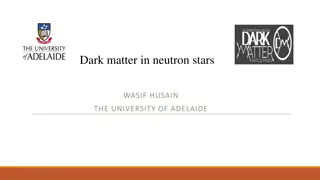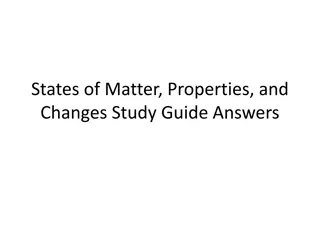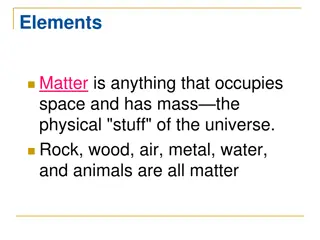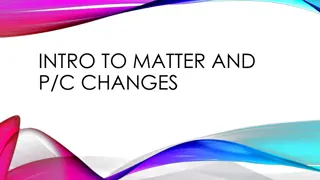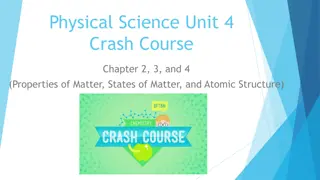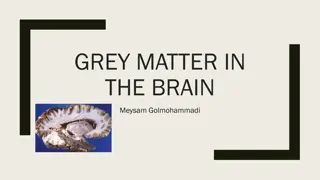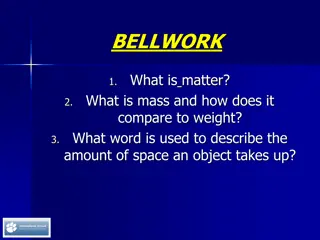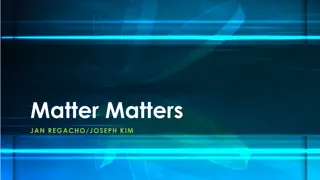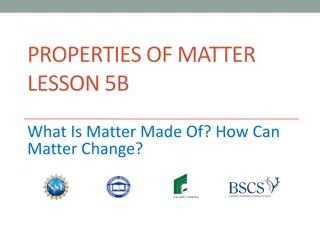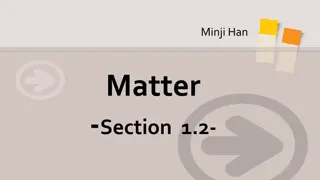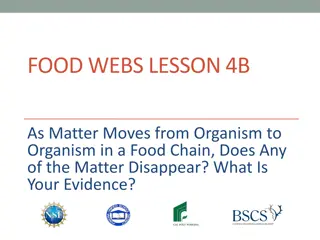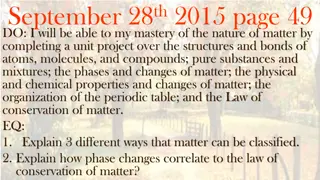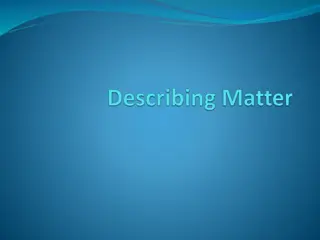Matter and its Properties
Matter is the fundamental component of everything around us, existing in various forms such as solids, liquids, and gases. This article delves into the states of matter, chemical changes, physical changes, and the kinetic molecular theory, shedding light on the basic building blocks of life and the transformations matter can undergo.
Download Presentation

Please find below an Image/Link to download the presentation.
The content on the website is provided AS IS for your information and personal use only. It may not be sold, licensed, or shared on other websites without obtaining consent from the author. Download presentation by click this link. If you encounter any issues during the download, it is possible that the publisher has removed the file from their server.
E N D
Presentation Transcript
MATTER MATTERS By: Felicia Poelzer, and Alyson Vance
MATTER Matter is as everyone says is "the basic building blocks of life". It comes in many different forms such as shape, colour, texture, states (solid, liquid, gas), viscosity, and strength. Matter makes up everything from the smallest bug to the tallest building. http://carsongee.com/blo g/2010-09-25/92
STATES OF MATTER There are 3 states of matter. Solid, liquid, and gas. First lets talk about solids. Solids are made up of molecules that are tightly packed together that vibrate. Next moving on to liquids. Liquids when put into a container will then take the shape of the container. Liquids are molecules that are packed together but instead of the molecules vibrating they swipe and slide past each other. And lastly gas. Gases spread out so far apparat that their physical form is no longer visible. http://www.movdata.net/ states-of-matter.html
CHEMICAL CHANGE Chemical change is when you change something that cannot be reversed and you give it new properties. An example would be scratching or cracking your phone screen. Thought out could get a new screen, you cannot change the state of the current screen. http://emgn.com/entertainment/14-ways- youre-mistreating-iphone/
PHYSICAL CHANGE Because there are 3 types of states, there are 6 ways that something could be physically changed; solid to liquid, liquid to gas, gas to liquid, liquid to solid, solid to gas, and gas to solid. For one that might not be as obvious like solid to gas, an example would be when you open your freezer door and you see the fog coming out of your freezer that is your ice cubes shrinking. http://www.creditslips.org/creditslips/20 15/01/the-melting-ice-cube-fallacy.html
KINETIC MOLECULAR THEORY Main points in the Kinetic molecular theroy is that everything is made up of very small particles. Those particles are constantly in motion and the more energy the particles have the faster and farther apart they can get. https://www.boundless.com/chemistry/textbooks/b oundless-chemistry-textbook/liquids-and-solids- 11/kinetic-molecular-theory-of-matter-83/the- kinetic-molecular-theory-of-matter-371-1529/
BIBLIOGRAPHY Worksheets: KMT notes Chemistry chapter 1.2 textbook
THE END Thanks for watching!








